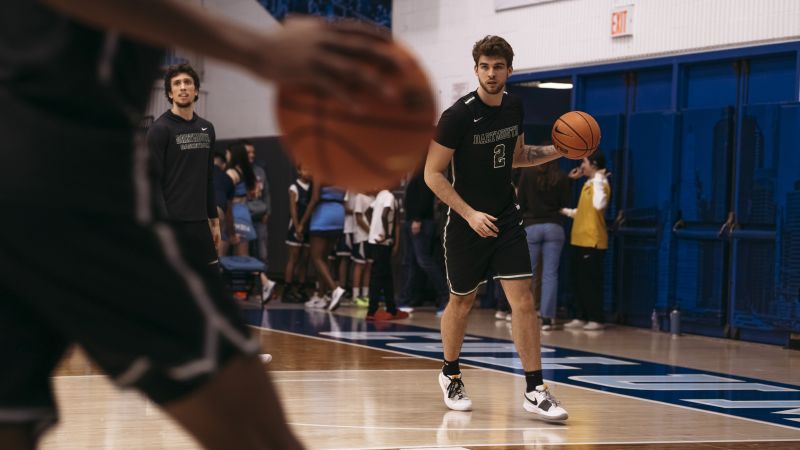Members of the Dartmouth College men’s basketball team Tuesday became the first college athletes to vote to join a union, a significant milestone in the rapidly changing business for collegiate sports.
The team members voted 13-2 in favor of the union, according to the National Labor Relations Board, which oversees union representation votes for private employers.
The affirmative vote does not automatically mean that there will be a union for members of the the team. Dartmouth has already indicated it will appeal the decision by the NLRB to recognize the players as employees who are eligible to join a union.
“We have productive relationships with so many unions. We believe our athletes are students,” Dartmouth President Sian Beilock told CNN’s Poppy Harlow in an interview last month. “We don’t give athletic scholarships. We are student-athletes here, and we believe our students should be thought of in that way.”
But a regional director of the NLRB ruled that the players are employees because Dartmouth “has the right to control the work performed by the Dartmouth men’s basketball team, and the players perform that work in exchange for compensation.”
That compensation includes “room and board for part of the year, equipment, apparel, tickets to both home and road games, footwear, access to nutrition and medical professionals, exclusive use of certain facilities, and academic support,” according to the NLRB regional director’s findings.
Tuesday’s vote is a significant one, with the potential to greatly reshape the landscape of college sports in America, especially in the two sports that produce the most revenue – football and basketball.
Together the 352 schools that play in Division I conferences reported that those two sports alone produced revenue of $7.9 billion during the last school year, according to data compiled by the Department of Education. Overall Division I athletics generated nearly $17.5 billion in revenue in 2022, according to a National Collegiate Athletic Association report.
The NCAA has long sought to prohibit students from receiving any compensation for athletics, other than scholarships and some modest stipend money. But the Supreme Court opened the door for greater compensation for student athletes in 2021 when it ruled unanimously that NCAA rules prohibiting compensation to student athletes violated antitrust laws.
Professional sports is one of the most heavily unionized sectors in the US economy, with most pro athletes in the four major team sports – football, basketball, baseball and hockey – being members of unions. They are among the best paid union members in the country.
While the pay level of most professional athletes is negotiated between the teams and the players or their agents, not the union, the unions and the leagues agree on contracts that set the terms of the negotiations and make the multi-million dollar contracts possible.
Professional athletes in one of the four major North American sports leagues make a minimum salary of between $740,000 a year in baseball to $1.1 million a year in the National Basketball Association, assuming they stay on a roster of one of those teams for an entire season.
This is a developing story. It will be updated.
Read the full article here
